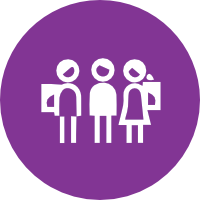Maurice
Maurice is a 17-year-old senior at Niagara Falls High School. He aspires to go to college after he graduates, but feels he doesn’t have the support he needs to get there. Growing up in Niagara Falls, opportunities for exploring careers, cultivating interests, and trying hobbies were scarce.
Maurice feels there is no positive motivation from adults. “I know what I want to do…but I don’t know what I want to do. I wanted to be a history professor but a lot of people told me that’s not realistic.” Maurice suggests that schools could have a more diverse teaching staff and organize more inclusive college fairs and career planning programs so youth can develop ideas of what they want to do in the future.
Sometimes school has been hard for Maurice, especially when things aren’t going well at home. Many of his teachers don’t seem to understand or care about the challenges he deals with outside of school. His mom is disabled and can’t work, but has had issues getting assistance through certain programs. Money is tight. Although the landlord hasn’t maintained their home in years, they still pay a lot in rent. Maurice even has friends whose families were recently evicted.
Along with a need for more support and career guidance, Maurice says that youth in Niagara Falls need more creative outlets outside of school. Maurice doesn’t see anywhere for youth to be expressive. “There’s just a park and a basketball court but not everybody plays basketball.” There are some programs for youth, such as The Casey House and The Connection, but not many that give kids a positive outlet. “You’ll have fun with your friends, but in most situations it’s the wrong kind of fun, and we’re labeled as bad kids.” Other programs, like Cribs, have closed due to a lack of funding. The young resident suggests that one of the best ways for the city to address the lack of youth spaces is by converting vacant buildings into youth centers or other spaces that could be used by youth.
“You’ll have fun with your friends, but in most situations it’s the wrong kind of fun, and we’re labeled as bad kids.”




